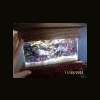-
Topics
-
Latest Update
-
3
WTS Equipments.
Guyu led sold. the rest still available. Sent from my CPH2499 using Tapatalk -
2
-
0
WTS corals
duncan $15 long tentacle toadstool $40 x 2 both on same rock gsp $30 adult palm size palythoa grandis $40 collection @ upper thomson Sent from my iPhone using Tapatalk -
0
WTS corals
duncan $15 long tentacle toadstool $40 x 2 both on same rock gsp $30 adult palm size palythoa grandis $40 collection @ upper thomson Sent from my iPhone using Tapatalk -
0
WTS corals
duncan $15 long tentacle toadstool $40 x 2 both on same rock gsp $30 adult palm size palythoa grandis $40 collection @ upper thomson Sent from my iPhone using Tapatalk
-








Recommended Posts
Join the conversation
You can post now and register later. If you have an account, sign in now to post with your account.